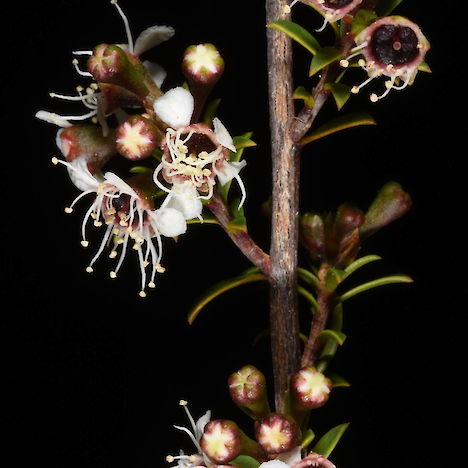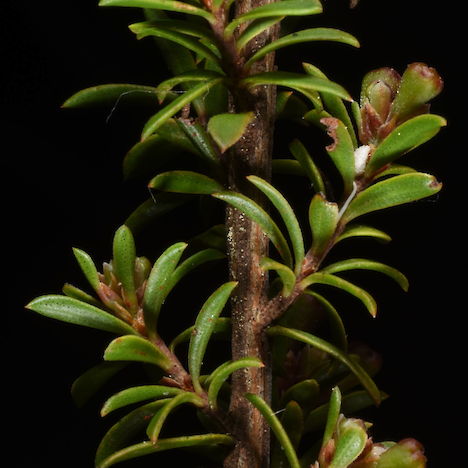Threat category:
Threatened: Nationally Endangered?Regions:
Waikato, Bay of PlentyDistribution:
Geothermal sites in the Taupō Volcanic Zone
Key Features
- Geothermal kānuka is a shrub or small, much-branched tree inhabiting geothermal areas of the Taupo Volcanic Zone.
- The grey bark is loose and flakes readily into small irregular shards.
- Branches are sinuous and slender.
- Branchlets are numerous, slender, and often pendulous, with young stems copiously covered in short erect hairs.
- Leaves are numerous and up to 10 mm long (usually much less).
- Early flowering, flowers white, up to 9 mm diameter, borne in dense clusters.
- The fruit is a small dry capsule 1.0–3.3 × 1.6–3.2 mm.
Distribution and Habitat
- Endemic to geothermal sites in the North Island and their immediate surroundings from Kawerau south to Tokaanu.
Threats
- Habitat modification and loss.
- Weeds such as wilding conifers and blackberry shading geothermal habitat.
- The potential effects of myrtle rust on this species is unknown.
- Fire and land clearance.
- Changes to geothermal fields as a result of energy extraction.
Management Opportunities
- Survey geothermal areas to assess botanical values present and provide information to landowners.
- Monitor populations.
- Protection of habitat.
- Ensure that forest owners are aware of potential habitats and can recognise the species.
Monitoring Options
- Check existing populations on a regular basis e.g. annually.
- Report new locations to DOC.
- Further Information and Support
- Weed control - Department of Conservation, Regional Councils.
References
- de Lange P.J (2014). A revision of the New Zealand Kunzea ericoides (Myrtaceae) complex. PhytoKeys 40: 1–185.
- New Zealand Plant Conservation Network (NZPCN). http://www.nzpcn.org.nz





